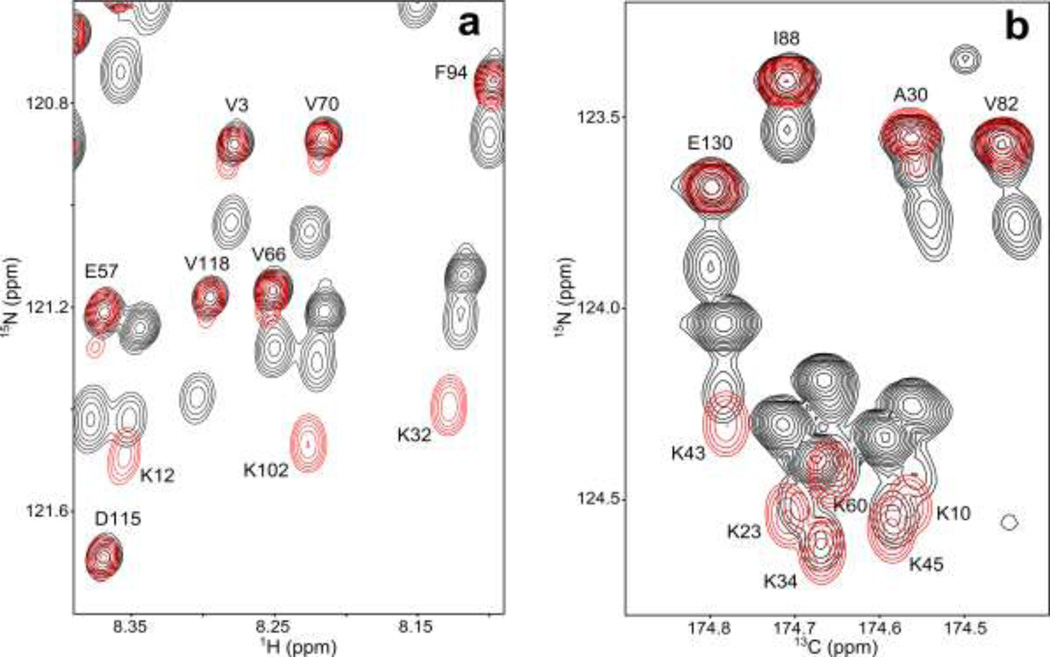Figure 2.
Overlays of two spectra acquired on 1H/15N-Lys, perdeuterated aS (red) and on a mixture of protonated and perdeuterated aS (black). (a) Expanded region of the 900 MHz TROSY-HSQC spectrum, where the spectrum of the mixed sample presents a different region of the same spectrum shown in Figure 1a. Small downfield shoulders on the red correlations observed for Val residues originate from incomplete perdeuteration of their sidechains. Resonances for Lys residues in the 1H/15N-Lys, perdeuterated aS (red) spectrum are more downfield than those of the fully protonated component of the mixed sample spectrum (black), indicating that perdeuteration of the residue preceding Lys causes a downfield 2H isotope shift for both 15N and 1HN. In the 1H/15N-Lys, perdeuterated aS spectrum the Lys peaks are displaced from their positions in perdeuterated aS by a nearly uniform amount. However, the displacement of Lys peaks from their positions in fully protonated aS is very different for K12 compared to K32 and K102. This results from the fact that K12 is preceded by Ala, while K32 and K102 are preceded by Gly, and the neighboring-residue contribution of Gly on 15N is about double that of Ala. (b) Expanded region of a projection of the constant-time 600 MHz NUS TROSY-HNCO spectrum on the 13C/15N plane. Resonances are labeled by the observed amide pair following the 13C'. The small, mostly downfield change in chemical shift relative to the broad component in the mixed sample (black) corresponds to the intraresidue 2H isotope shift effect on the 13C' of the residue preceding Lys.

